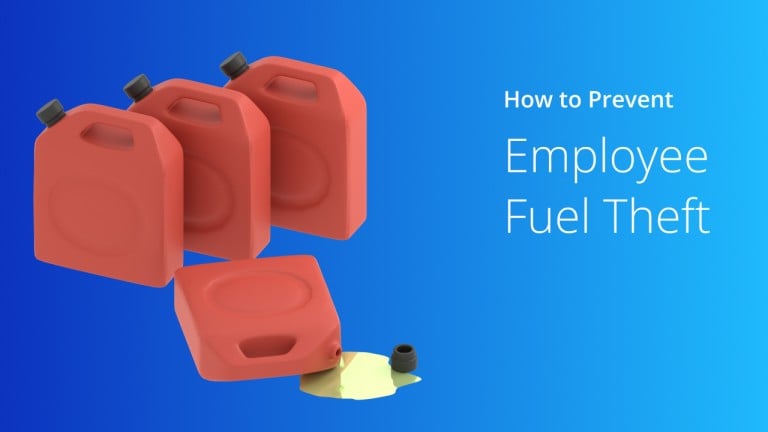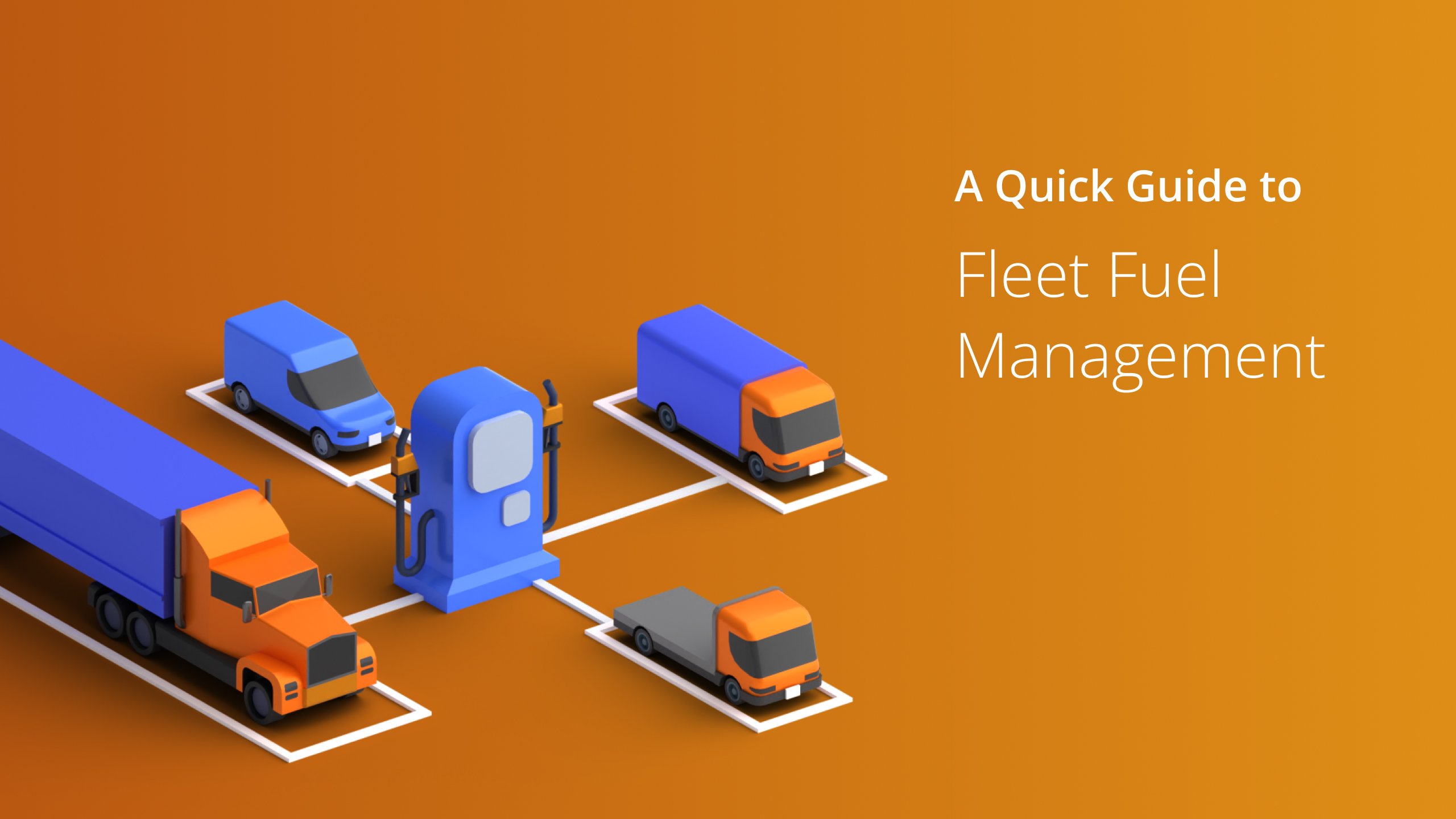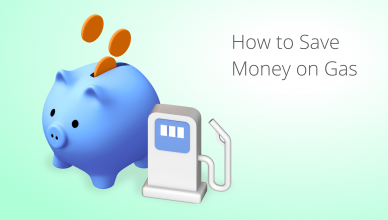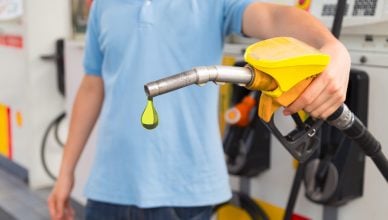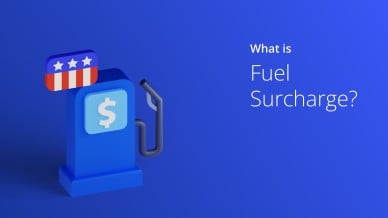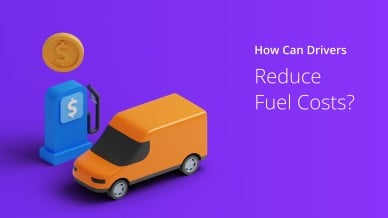We know you’ve got a lot on your plate when it comes to managing your service business. You’ve got deadlines to meet, customers to please, and employees to keep on the right track.
But here’s something you might not have thought about enough: employee fuel theft.
Yes, that’s right! It’s a sneaky problem that can drain your profits faster than a Formula 1 car racing down the straight.
According to research conducted by Shell, two out of five commercial drivers have witnessed another driver commit fraud, such as siphoning fuel from a company vehicle.
The Shell survey also found that fuel spending accounts for over 20% of total fleet operating costs, and theft prevention allows fleet managers to reduce fuel spending by as much as 10%.
So, it’s clear how fuel theft prevention will result in significant savings.
Therefore, in this blog post, we’ll discuss the various methods through which employees steal fuel and share strategies and tools to help you combat fuel theft.
Table of Contents
How Employees Steal Fuel
Here are several ways your employee could be stealing gas:
Unauthorized Filling of Personal Vehicles
This is a classic move. Employees might use company fuel cards or access to the fuel pump to fill their personal vehicles, essentially stealing fuel intended for business use.
Fuel Card Misuse
Some employees are a bit more subtle in their approach. They misuse fuel cards by filling their vehicles just a bit too much, exceeding the allowed limits, or even using them for purposes other than what they’re intended for.
Fuel Siphoning
It’s a common way for employees to steal fuel. They’ll use hoses or pumps to siphon fuel from company vehicles into their containers.
Manipulating Odometer Readings
Employees might tamper with vehicle odometers to hide the amount of fuel they’ve used for personal purposes. It’s like a double whammy – employees stealing gas and covering their tracks.
Double-Dipping
Some employees play a double game. They’ll fuel up company vehicles and then use the same fuel card to purchase additional fuel for personal use, essentially getting a free ride at your expense.
Stealing Fuel from Equipment
For those in the construction or maintenance business, heavy machinery and equipment are prime targets. Employees may steal fuel from these machines, which can seriously slow down your projects.
Multi-Stop Route Planner App

5 Ways You Can Prevent Employees from Stealing Gas
Here are several ways to ensure your employees can’t steal fuel.
1. Monitor Employee Activity
You can’t stop employee fuel theft if you can’t see it.
The best route planners offer a commercial GPS tracker that shows you the location and speed of your service reps or field employees in real-time.
Route4Me’s route planner goes even further than that. Our GPS-powered reporting and analytics feature provides critical insights into your drivers’ fuel consumption habits.
It shows you your average gas price, total gallons used and gas cost, average trip cost, and much more.
There’s also a timeline tool, which allows you to analyze your fuel expenses for selected routes over a given period.
With this information, you’ll have a much easier time identifying instances of fuel fraud.
You’ll know if someone is using more fuel than average. Then, you can investigate whether there’s a good reason for the discrepancy (an accident on the highway forced them to take a long detour, etc.) or if something suspicious is happening.
There’s also the Big Brother effect at play. Even if you never peek at your tracking data, it still influences your fleet’s behavior.
Employees are unlikely to commit fraud when they know they’re being watched.
Want To See For Yourself How Route4Me Can Help Prevent Employee Fuel Theft?

2. Implement Strict Fuel Policies
An employee could break the rules without even knowing it.
There might be some legitimate confusion over your fuel usage and reimbursement policies. So, be sure to make your policies clear and straightforward, ensuring everyone knows them inside and out.
Include the nitty-gritty details about fuel card usage, fueling locations, and limits. Ideally, policy details should be in writing, and you should share them with employees as soon as you bring them on board.
Clearly define the consequences of fuel theft in your policies and ensure they are consistently enforced. These consequences may include termination, legal action, or fines.
As your business evolves and grows, so should your fuel theft prevention policies. Regularly review and update these policies to adapt to changing circumstances and technologies.
3. Install Anti-siphoning Devices
Of course, the Big Brother effect is indirect. Anti-siphoning devices give you more control.
They use sensors to monitor fuel tanks, and you’ll automatically be sent an alert whenever there’s an unauthorized attempt to access the tank. This gives you the ability to respond to employee fuel theft rapidly.
4. Track Fuel Card Transactions
Fuel cards allow employees to purchase fuel and other vehicle maintenance items within a network of authorized merchants.
Fleet cards provide customizable purchasing controls, so you can choose where, what, when, and how much your drivers spend.
Generally, employees must input an identification number before purchasing, discouraging them from stealing fuel. But even with these controls, you must take precautions to stop fuel theft.
If you’re not vigilant, someone could regularly commit fuel theft and use a fuel card to fill up their personal vehicle.
Using a route planner that automatically tracks fuel expenses will improve your oversight efforts, as it can clearly display overall trends vs. the fuel usage stats of a particular employee.
5. Conduct Regular Audits
No matter how many methods you’re using to prevent employee fuel theft in the act, there’s always a chance that you’ll miss something. This is why it’s essential to conduct regular audits of your fuel-related records.
You want to catch anything that might have slipped through the cracks.
Watch for frequent refueling, unknown gas station locations, and irregular fueling times. You should watch out for drivers claiming a purchase that exceeds a vehicle’s fuel tank capacity as well.
6. Create a Culture of Honesty
Build a work environment where honesty and integrity are the story’s heroes. When your employees feel a strong sense of responsibility and commitment to the organization, fuel theft becomes a thing of the past.
Keep the lines of communication wide open. Encourage employees to report any suspicions of fuel theft and establish confidential reporting mechanisms.
Encourage fuel efficiency by offering incentives to employees who use fuel responsibly. A little motivation can go a long way.
Frequently Asked Questions (FAQs) about Employee Fuel Theft
How do you catch an employee stealing fuel?
How does fuel theft work?
Final Thoughts about Employee Fuel Theft
Preventing employee fuel theft is a critical aspect of running a successful service business. The financial impact, reputation damage, and operational disruptions caused by fuel theft can be severe.
By understanding how employees steal fuel and implementing preventive measures, you can protect your business and maintain a culture of integrity within your organization.
Regular monitoring, strict policies, and using a fuel management system or a route planner app are crucial to combating fuel theft and ensuring a bright future for your service business.
Want To See For Yourself How Route4Me Can Help Prevent Employee Fuel Theft?

